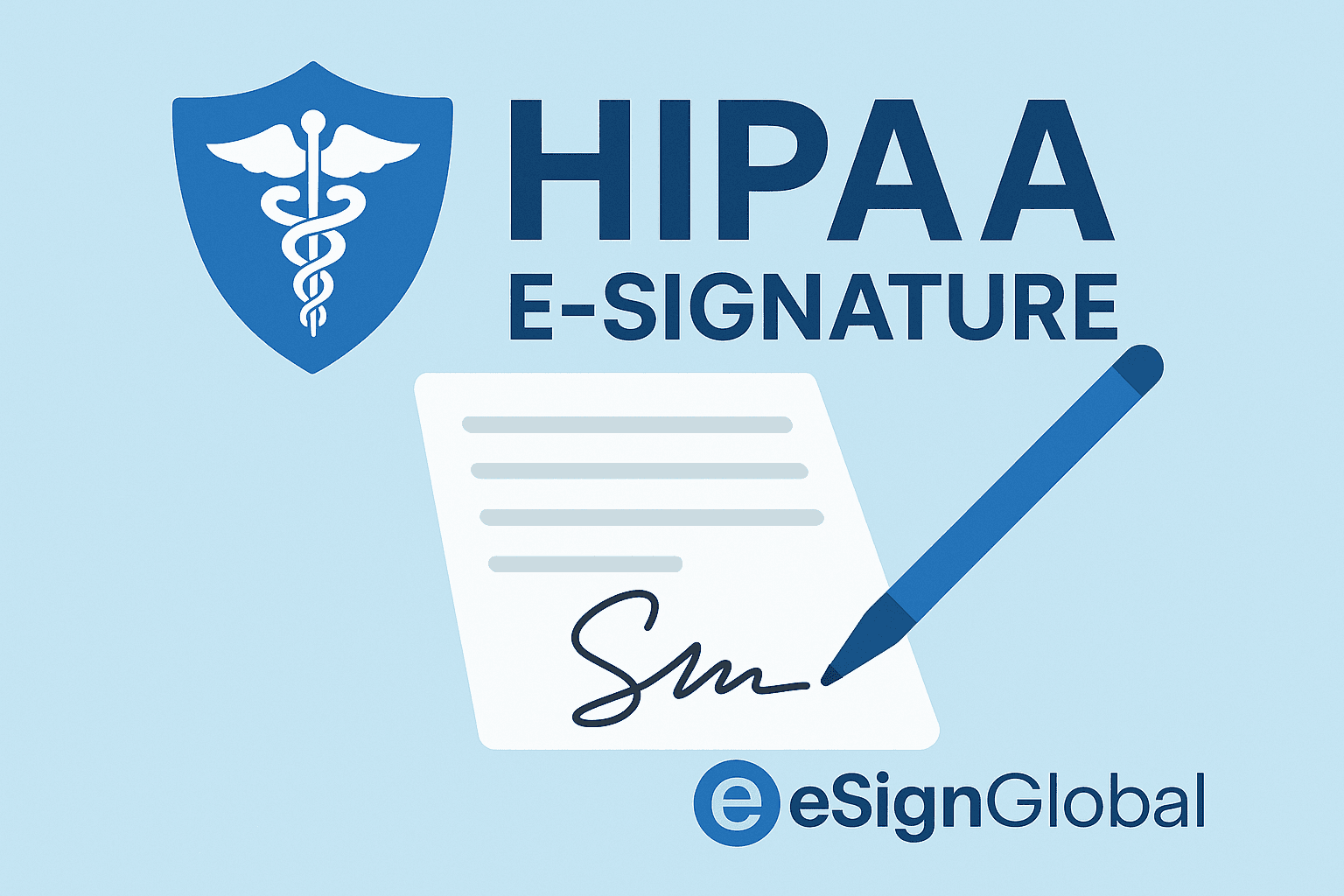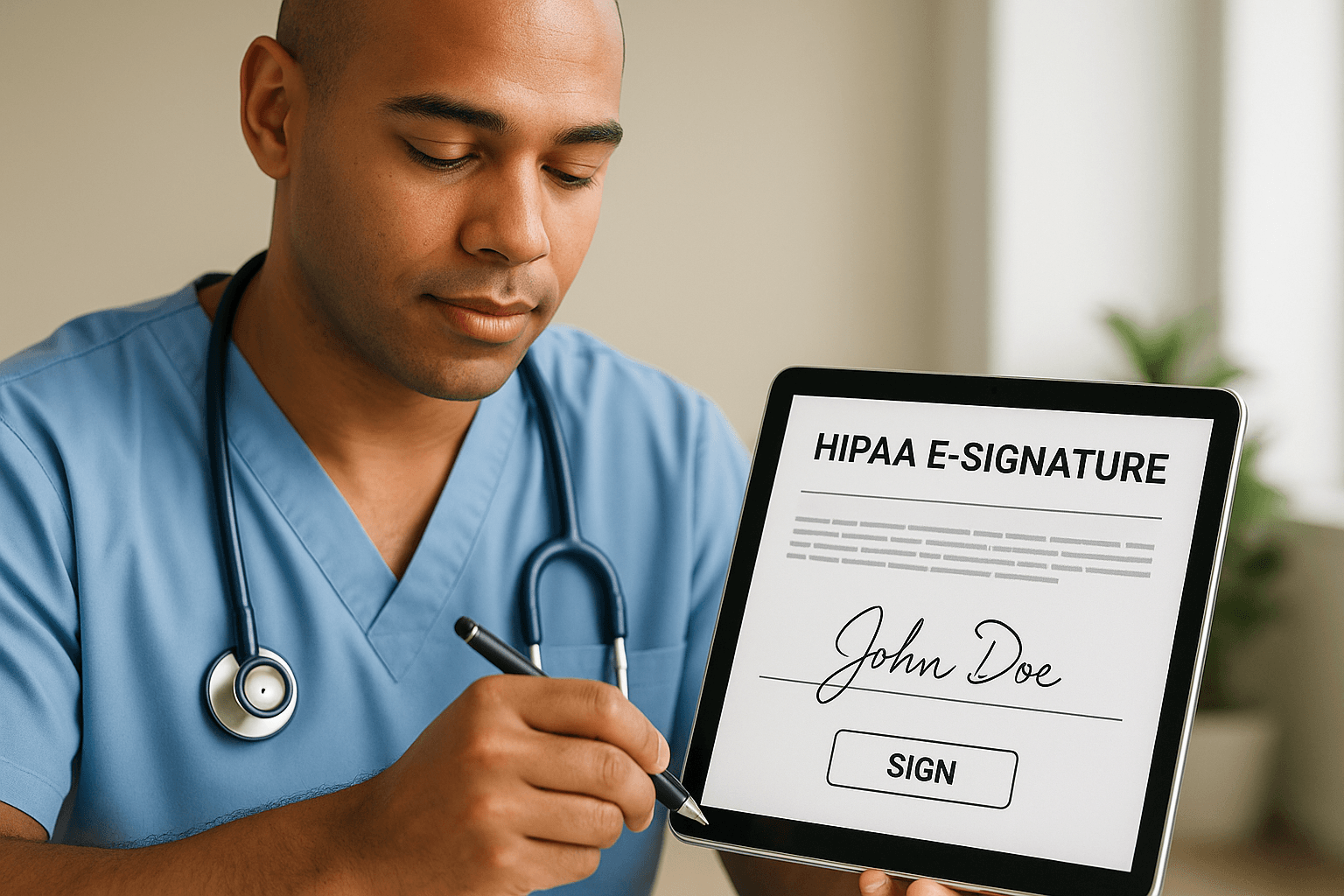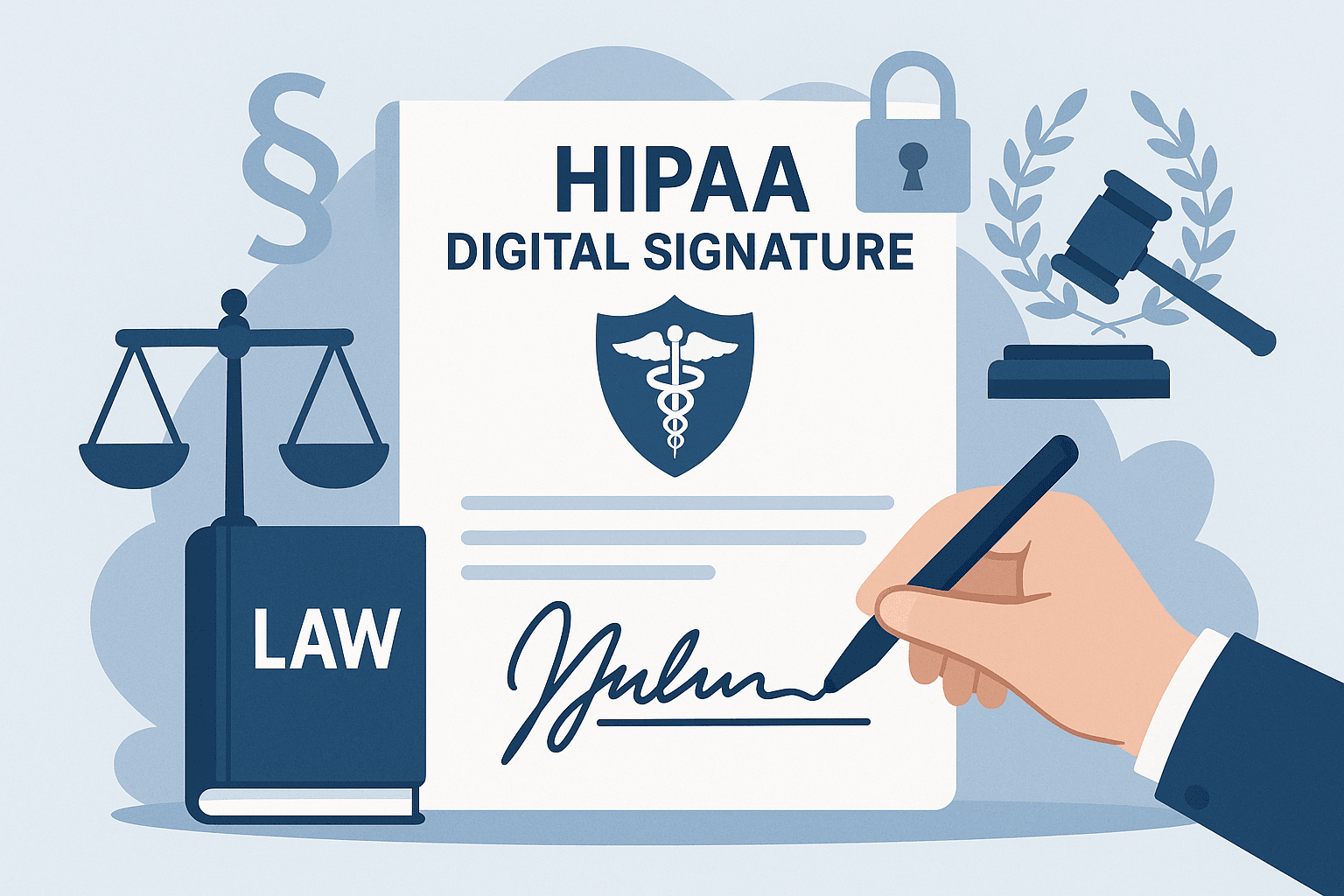WhatsApp or email with our sales team or get in touch with a business development professional in your region.
HIPAA Electronic e-Signature Solutions: Ensuring Legality and Security





Driving HIPAA Compliance with Electronic Signatures: A Healthcare Perspective
In today’s healthcare environment, electronic signatures (eSignatures) are no longer a convenience—they are a necessity. As digital transformation accelerates across the industry, healthcare organizations must maintain compliance with strict regulations such as the Health Insurance Portability and Accountability Act (HIPAA), while also improving operational efficiency. With electronic health records, remote care, and digital consent on the rise, finding a secure and compliant method for validating documentation is pivotal. Effective implementation of a HIPAA-compliant eSignature solution can bridge this need while supporting patient-centric care.

Understanding HIPAA’s Implications for eSignatures
HIPAA, formally enacted in 1996, aims to protect the confidentiality, integrity, and availability of protected health information (PHI). According to the U.S. Department of Health and Human Services (HHS), any technology handling PHI must meet specific standards under the HIPAA Security Rule and Privacy Rule.
When it comes to eSignatures in healthcare, compliance is not solely about inserting a digital mark on a document. It’s about ensuring that the eSignature process includes:
- Authentication of the signer
- Integrity of the signed record
- Secure transmission and storage of PHI
- Audit trails for ongoing accountability
The HHS has affirmed that HIPAA does not prohibit electronic signatures, but the technology used must support the goals of the law. Additionally, under the Uniform Electronic Transactions Act (UETA) and the ESIGN Act, eSignatures are deemed legally valid if they meet criteria for consent, identity verification, and record retention.
Common Use Cases in Healthcare Where eSignatures are Critical
Several points of the healthcare workflow now rely on eSignatures for legal and administrative efficiency. Situations include:
- Patient intake and registration forms
- Telehealth consent
- Clinical trial documentation
- Employee onboarding in medical facilities
- Medical release of information forms
- Advance directives and informed consent
A 2022 report by HIMSS revealed that 78% of healthcare providers had integrated eSignature technology into at least one patient-facing process, with telehealth-specific signatures seeing the fastest growth. As these functions deal with PHI, the technology supporting the signatures must fully align with HIPAA mandates.

Local Legal Requirements: Adhering to State-Level Nuance
While HIPAA sets a federal baseline, many U.S. states have additional statutes governing medical record retention or the digital execution of healthcare documents. For example, California’s Confidentiality of Medical Information Act (CMIA) adds layers of privacy requirements beyond HIPAA, particularly in the digital context. New York’s Electronic Signatures and Records Act (ESRA) grants legal recognition to eSignatures but demands adherence to state-specific security standards.
Failing to match both state and federal criteria can result in legal liabilities even if HIPAA requirements are fulfilled. Thus, a compliant eSignature solution must support jurisdiction-specific policies, such as:
- Customizing workflows to match state consent language
- Role-based access controls tailored to local privacy expectations
- Multi-tenancy support for entities operating across different state lines
Why eSignGlobal Meets HIPAA and Beyond
eSignGlobal has emerged as a leading provider of healthcare-specific digital signature solutions. What sets the platform apart is its purpose-built compliance engine that is aligned with not only HIPAA but also state-specific interoperability and data-handling rules.
Key security features include:
- End-to-end AES 256-bit encryption
- Access logging and granular audit trails
- Multi-factor authentication (MFA) for signer validation
- Real-time document tamper detection
- AWS-hosted infrastructure with HITRUST and SOC 2 Type II certification
These elements are not only technically impressive—they directly support compliance. For instance, under the HIPAA Security Rule’s Administrative Safeguards, covered entities must implement security measures that reduce risk and vulnerability. eSignGlobal’s real-time activity logs and access controls fulfill this mandate by design.
Cost is another differentiator. Traditional wet signature workflows cost up to $7 per document in printing, scanning, and storage. A 2023 Frost & Sullivan benchmarking study showed that healthcare providers using eSignGlobal cut documentation costs by an average of 60%, while shortening turnaround time for patient consent forms from 48 hours to under 2 hours.

Real-time Responsiveness and Operational Agility
Healthcare is not a 9-to-5 industry. Patients, staff, and clinicians need access to documentation tools around the clock. eSignGlobal delivers 99.99% uptime, supports mobile-compatible workflows, and integrates directly with Electronic Health Record (EHR) platforms like Epic and Cerner.
Consider a hospital emergency department that requires rapid patient consent for emergency procedures. Relying on fax machines or physical signatures could delay critical interventions. With eSignGlobal’s API-driven integration, the consent document can be sent to a caregiver’s mobile device, signed electronically within minutes, and instantly archived in the patient’s EHR—safely and with a full audit trail.
These real-world benefits matter not just for convenience but for regulatory preparedness. The Office for Civil Rights (OCR), which enforces HIPAA, conducts random audits. Instant access to verifiable eSignature logs can mean the difference between passing or failing such compliance reviews.
Better Service Outcome—Driven by Trust and Reliability
Ultimately, HIPAA compliance isn’t just a legal checkbox. It’s about safeguarding patient trust. A patient consenting to a procedure expects both secure data handling and operational transparency. If a hospital can show that its eSignature process is secure, robust, and standardized, it fosters confidence.
eSignGlobal empowers this by making compliance the foundation—not an afterthought—of its platform. The vendor undergoes external third-party audits, participates in healthcare compliance forums, and offers localized configurations for organizations operating across jurisdictions. These investments translate into better patient service outcomes, reduced legal exposure, and a more resilient digital transformation journey.
Final Thoughts
In the evolving regulatory landscape of healthcare, electronic signatures must do more than capture consent—they must reflect accountability, security, and legal relevance. With the right technology partner—such as eSignGlobal—healthcare organizations can meet HIPAA’s rigorous demands, adapt to state law variations, and deliver improved patient and clinician experiences. The gains are tangible: lower costs, faster turnaround, and enhanced privacy. Choosing a strategically designed, secure eSignature solution is therefore not just best practice—it’s a clinical and compliance imperative.

Shunfang
Head of Product Management at eSignGlobal, a seasoned leader with extensive international experience in the e-signature industry.
Follow me on LinkedIn
Get legally-binding eSignatures now!
30 days free fully feature trial
Business Email
Get Started
 Only business email allowed
Only business email allowed
Latest Articles


